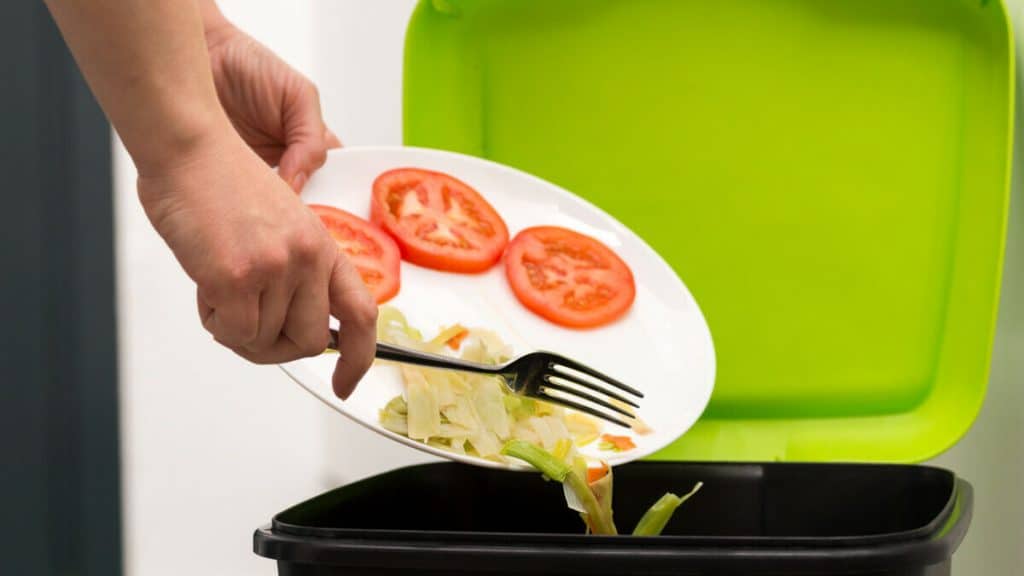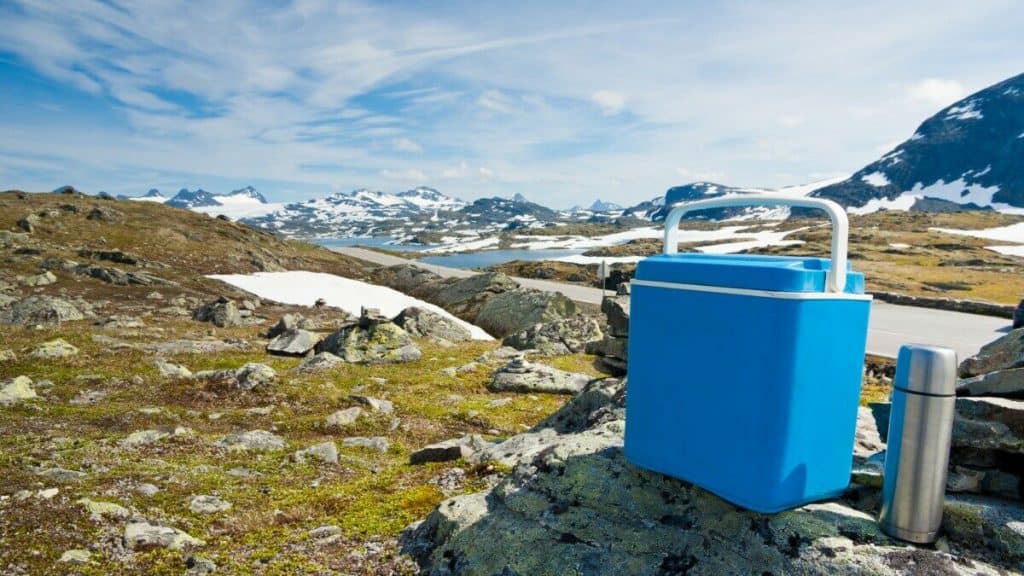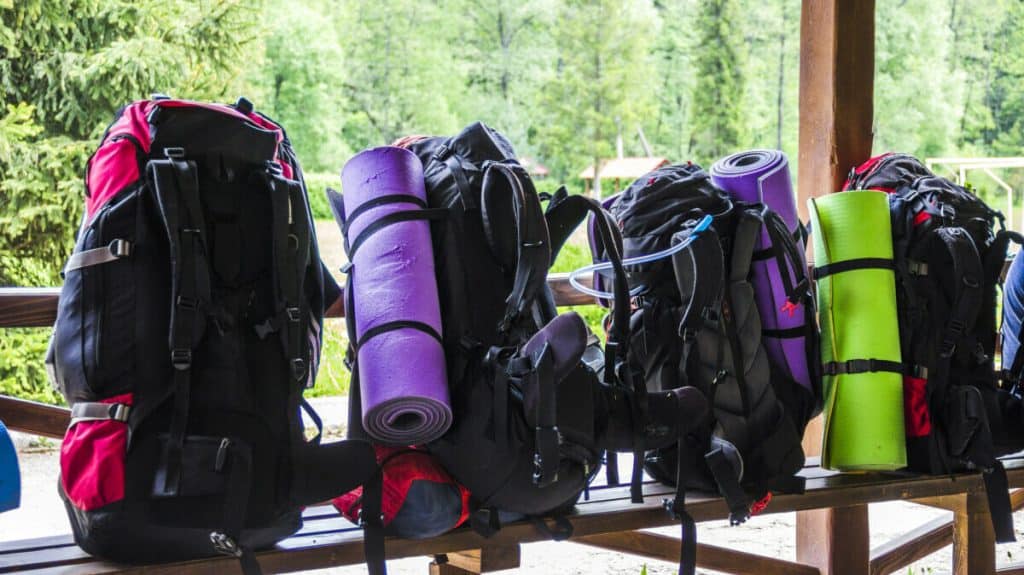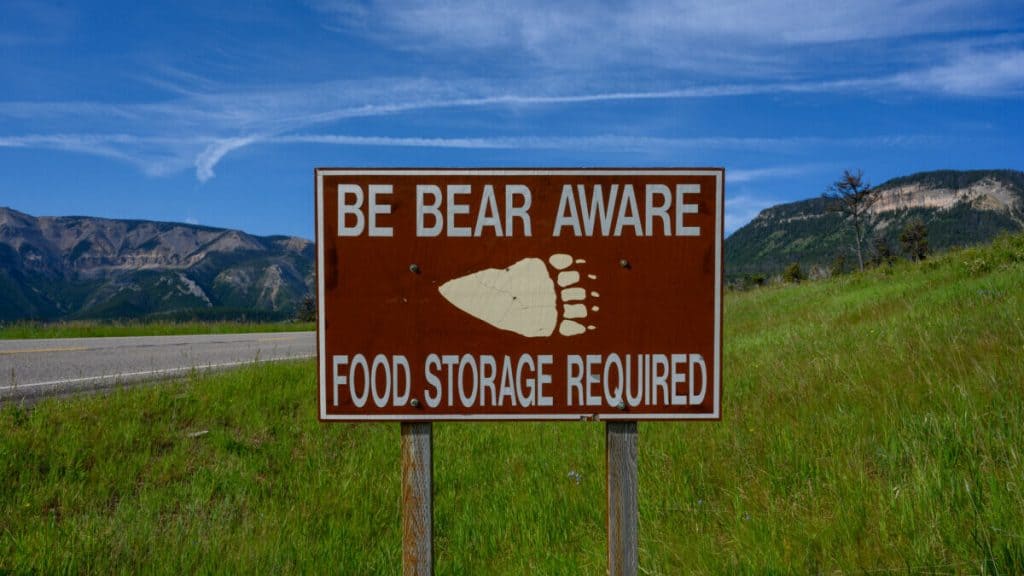
Spoiled food can ruin any camping trip, whether it leaves campers hungry, or even worse, it makes people sick. It’s important to safely store your food so you avoid spoilage and keep yourself safe from animals around the campsite. Doing this is quite easy as long as you are mindful of the food temperature and storage location.
To store food safely while camping, keep food in a cooler with plenty of ice or frozen gel packets. The temperature should remain under 40 degrees Fahrenheit. Leftover and cooked food must be put in a cooler or refrigerated container within 2 hours after being made to avoid bacteria from growing.
In order to avoid bacteria in your food, there are a few things to know regarding temperature, how to pack a cooler, and how to avoid animals, so you can have a safe and fun camping trip.
Avoiding Bacteria

Temperature plays one of the most important roles when safely storing food. This is because bacteria will grow rapidly when they have nutrients, moisture, and favorable temperatures. Rapidly growing bacteria can cause illnesses, so it’s crucial that this is avoided.
What temperatures allow bacteria?
Bacteria grow the most rapidly between temperatures of 40 to 140 degrees Fahrenheit. You might have heard of this temperature range as the “danger zone,” because bacteria can double in number in 20 minutes.
You should never let your food sit out of refrigeration for over 2 hours. If it’s over 90 degrees outside, then your food shouldn’t be left out for more than 1 hour.
If food needs to be frozen, it must be stored at a temperature under 0 degrees Fahrenheit. Freezer foods will gradually spoil if they are placed at a refrigerator temperature and it is quite difficult to keep foods frozen while camping.
Packing A Cooler

A cooler is going to be the safest option to store your food while camping. It will effectively keep your items colder than anything else, and that low temperature is what will keep bacteria away. The following are some important tips and guidelines to ensure safe food storage:
Pack raw foods and cooked foods separately:
- First of all, be sure to pack raw foods and cooked foods separately to avoid cross-contamination. If this isn’t possible, place foods in a secure wrapping and watertight plastic storage container at the bottom of the cooler. This way the juices won’t contaminate other foods.
Place food on the bottom, and fill with ice to the top:
- Perishable foods should be placed directly from the fridge/freezer into the cooler, and the remaining space should be filled with ice, frozen gel packets, or other cold sources. The more cold sources you have, the longer the food will stay cold, so fill the cooler with them as much as possible. Make sure you put your items on the bottom of the cooler and ice on top because cold air travels down.
Limit the opening and closing of the cooler:
- If you are bringing drinks as well, put these in a separate cooler if possible, to avoid opening and closing the cooler so much. You want to keep the lid tightly closed and limit the number of times you open and close it in order to maintain a cool temperature.
Keep the cooler in a shaded area:
- While driving to the campground, it’s helpful to keep your cooler on the floor of the passenger side of your car instead of sunny and hot spots like a trunk or external carrier. This will extend the cooling time of your ice and gel packs. Once you’ve arrived at the campground, keep the cooler in the shade, whether that’s under a tree or bench, somewhat buried in sand, or covered with a light-colored blanket.
Bring an appliance thermometer:
- It will be very helpful to bring an appliance thermometer to make sure your food is stored at the right temperature. You can place it in the cooler and confirm that it’s below 40 degrees Fahrenheit before you start preparing your meal.
After eating, immediately put your food back into the cooler.
Storing Food While Backpacking

If you happen to be backpacking or don’t have a car with you, then it’s a bit harder to bring a whole cooler. It’s best to bring foods that won’t need to be stored at a certain temperature. That is why dehydrated, canned and jarred foods are most common in the backpacking world. Try some store bought or DIY dehydrated meals at home; you may be surprised by how good some are.
However, if you are backpacking and need to keep something cool, you could bring a lightweight cooler. These come in different sizes and shapes, including backpack or stuff sack type configurations.
With a small backpacking cooler, you can pack it like a regular cooler with ice or frozen gel packs to keep your food from spoiling. Again, a lightweight thermometer is a good safety precaution.
How To Keep Animals From Eating Your Food

Aside from food spoiling, it’s important to store food properly to keep you safe from animals. Bears can unfortunately end up euthanized if food-conditioned by irresponsible food storage. Food should always be secured and put away when you’re not eating it so that the scent doesn’t attract bears or other animals to your camp. From a bear’s perspective, “food” includes anything with scent including garbage, bug spray, kitchen items and fuel. These are some ways to store food while keeping yourself protected:
Store food in a car:
- If you have a car with you, then it’s a good idea to keep your secured and packed food items inside your car. Locking it up will help reduce those bear-friendly scents, and away from your camp group. Be sure to keep the windows closed when storing food in a car.
- In bear country, using a specific jacket or shirt for cooking and storing that with your food may be a good idea. Bears have an incredible sense of smell (many times superior to that of bloodhounds) and can these minor scents at long distances.
- Storing food in your car also makes sense because bears, raccoons, and other smart animals can often open coolers. Sometimes, bears can even break into cars (including locked cars), especially in California. This doesn’t happen too often, but it is possible. Many campgrounds with bears will therefore require the use of a bear box or bear cannister.
Store food in a bear box:
- Another way to store your food is to place all your food and cooking equipment in a bear box. A lot of campgrounds provide these, which are large metal containers that are locked. These are helpful if you don’t have a car or want to avoid the car break in scenario mentioned above.
Hang food in bear bags (or place it in a bear canister):
- If none of these options are available, you could consider storing your food in a bear bag. To do this, place your cooler and/or food in a bag, and hang it about 15 feet above the ground. It should also be 15 feet away from any tree trunk if possible. Some campgrounds have bear poles or cables to hang these bags on, but if not, you can hang them on any tree.
- It’s recommended to place this bear bag about 200 feet downwind from where you’ve set up camp, to keep you safe from bears.
- There are thick bear bags called Ursacks that can be tied to the base of a tree in some locations. These are placed a distance away from your camp (e.g. 25 yards). The main negative there is smashed food if a bear does find it and tries to get into it. A plastic bag (eliminates odor) and aluminum liner (adds crush resistance) within the Ursack can help reduce that risk.
- Some parks require bear canisters instead of bear bags or Ursacks. These canisters are the safest (but bulkiest and heaviest) backcountry solution.
You basically want to keep your food and food waste secure and a good distance away from you so that animals don’t eat it, and they don’t eat you.
